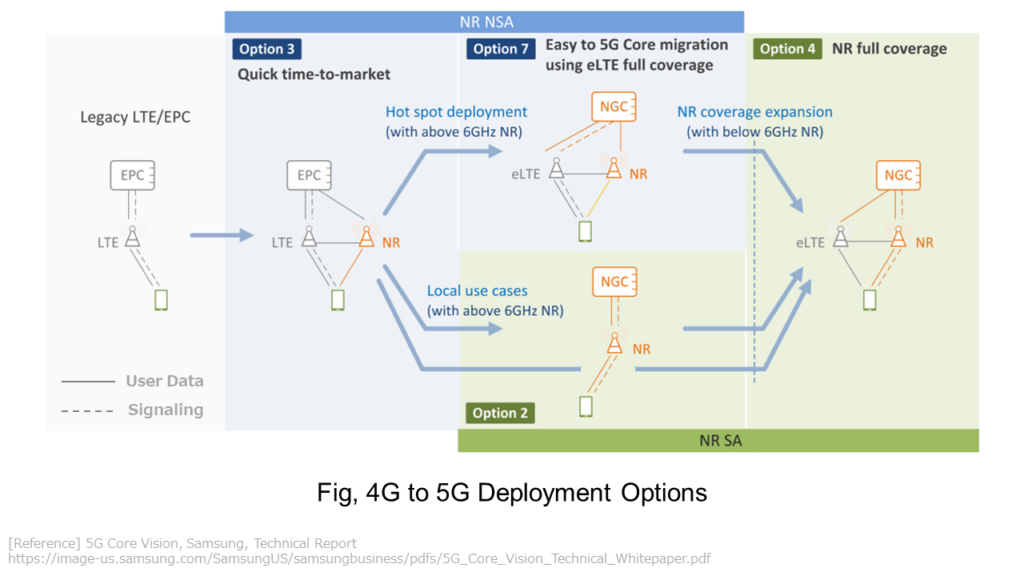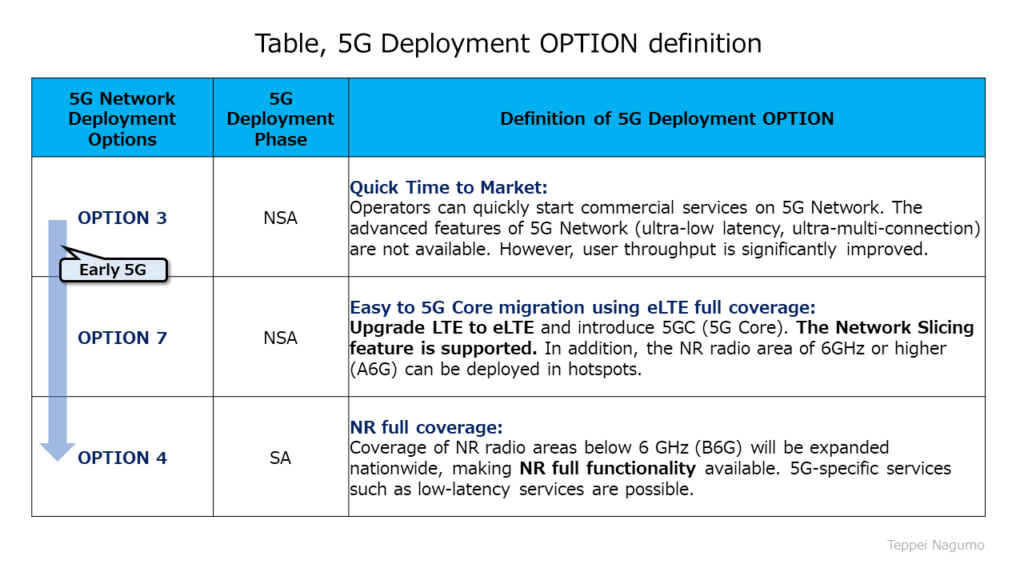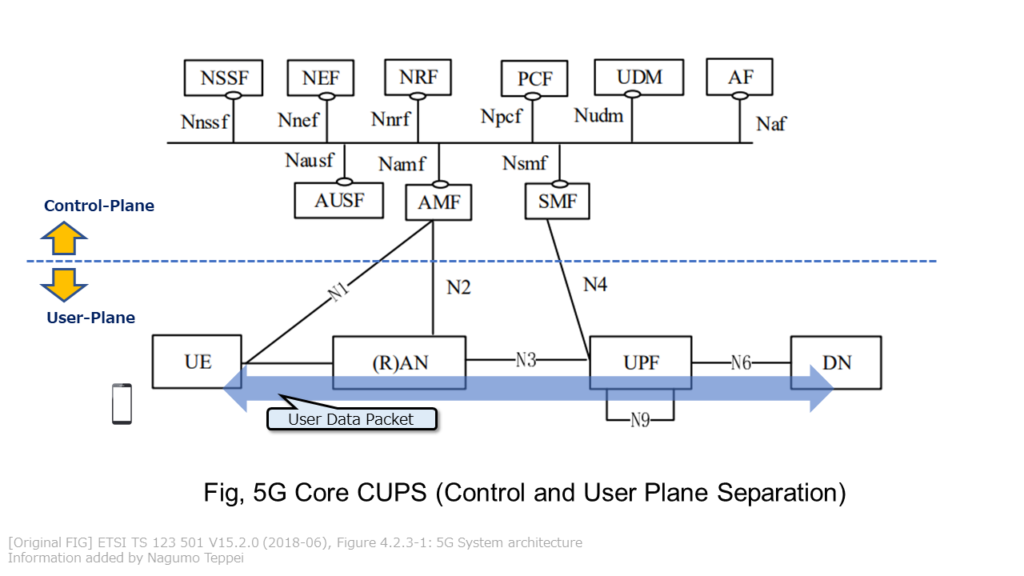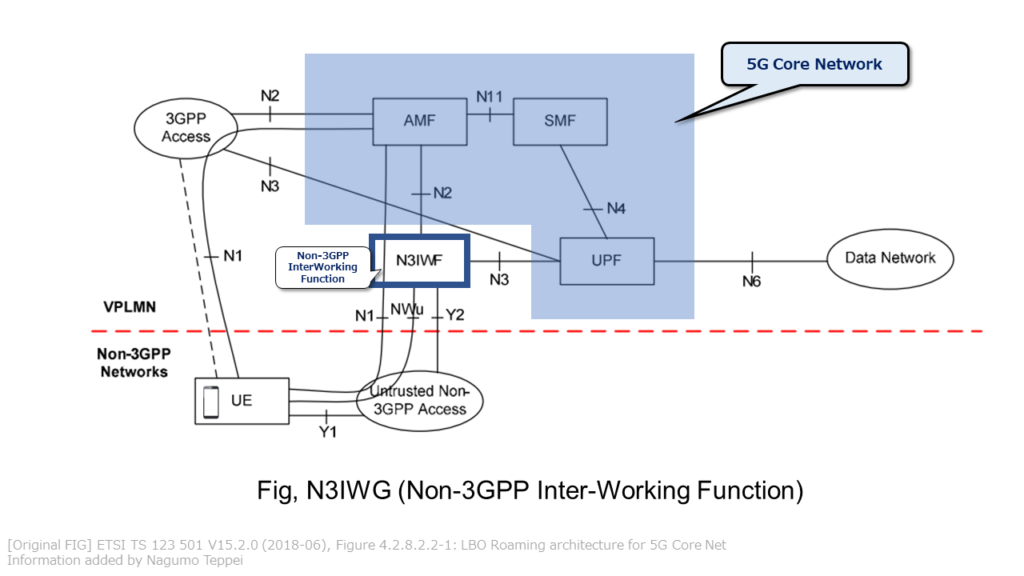What is 5G? In this blog post, I will explain how 5G Core Network (5GC) changes from 4G Core Network (EPC).
I will clarify the flow of deployment of 5G Core Network and each stage of 5G Network enhancement (3GPP OPTIONs defined). Also, introduce key technologies used in 5G Core, such as Service-based Architecture (SBA).
What are 5G NSA (Non-Stand Alone) and SA (Stand Alone)?
5G Network enhances through several stages. Describes each step of upgrading from an initial 5G network to a complete 5G function full capability network.
5G Network is divided into NSA (None Stand Alone) and SA (Stand Alone) depending on the difference in Core network. In the NSA Network, UE (terminals such as smartphones) control signals (Signaling) are processed by LTE (Signaling Anchors). In the NSA Network, UEs are connected to LTE (4G) and NR (5G) at the same time (EN-DC: E-UTRA NR Dual Connectivity). On the other hand, in the SA Network, the UE control signal (Signaling) is processed by 5G NR.

5G Network deployment OPTIONS
It takes time to build a sufficient wireless area for 5G NR. This is because it takes time to newly install a large number of 5G base stations. Therefore, 5G will be enhanced to SA through the NSA phase that utilizes the existing LTE (4G) and 4G Core (EPC) network.
Based on the information in the White Paper below, the 5G Network Deployment flow and each stage (3GPP OPTION) will be explained. Although the actual 5G specification is subdivided and defined in detail, it is simplified and only outlined here.
5G Core Vision Technical Whitepaper (by SAMSUNG) [PDF file]
Since the 5G NR radio area Network is very limited in the early stages of 5G deployment, UE control signals are processed by LTE (4G), which has already sufficient area coverage. As the radio area coverage of 5G NR increases, the control signal of the UE is processed by 5G NR.

The NSA has Option 3 to reuse the 4G Core Network (EPC: Evolved Packet Core) and Option 7 to introduce 5G Core.

C/U Separation (CUPS: Control and User Plane Separation)
In the 4G Core Network (EPC: Evolved Packet Core), the functions of Control-Plane (control signal) and User-Plane (User data) were not clearly separated.
It is called C/U Separation (CUPS: Control and User Plane Separation), and in 5GC (5G Core Network), Control-Plane (control signal) and User-Plane (User data) are clearly separated. By separating C/U, the functions of C-Plane (control signal) and U-Plane (User data) can be developed independently.

The C-Plane processing function can be centrally arranged. In addition, U-Plane processing can be distributed arranged. Thanks to the distributed arrangement of U-Plane, MEC (Multi Access Edge-Computing) can be easily introduced into 5G Network edge.
SBA (Service Based Architecture)
In 5GC, Service Based Architecture (SBA) is adopted for the processing function of C-Plane (control signal).
In 4G Core (EPC), the interface between devices was specified point-to-point. The C-Plane (control signal) function of 5GC (5G Core) has been unified into a Web-based interface (REST interface defined using HTTP 2). In 5GC, each function of C-Plane (control signal) is considered as a service, and each service is called by a unified Interface and published via SBI (Service Based Interface), which is a Web-based interface. The C-Plane (control signal) function can acquire and provide information stateless. For that reason, control signal processing has become simpler.

5G requires a platform that can provide a wide variety of services quickly. 5GC is more than just a network that transfers data. It is necessary for 5GC to add functions according to the characteristics of the application, and to quickly add functions according to the UE (terminal such as smartphone and autonomous driving care) and application development cycle. For this reason, 5GC uses the Micro Service Architecture used in the cloud field (development of web and mobile applications).
Micro Service Architecture has features such as “easy to scale” and “resistant to change”. 5GC’s Service Based Architecture (SBA) is an application of Micro Service Architecture to the 3GPP standard.
The following White Paper summarizes the 3GPP standardized 5GC microservices architecture.
Cisco Ultra 5G Packet Core Solution White Paper [PDF file]
3GPP is an international standardization project for examining and creating (5G) specifications. 3GPP is studying and standardizing 5G specifications. 3GPP has specified 3G mobile phone (3G) systems based on W-CDMA and GSM evolution networks, followed by LTE (4G). For more information on 3GPP, please refer to the following blog post.
Connection from a different wireless network (Multi-RAT access)
The mobile communication system network called 4G and 5G is divided into Radio Access Network and Core Network. By changing the core network from 4G EPC (Evolved Packet Core) to 5GC (5G Core), 5G networks will be enhanced with various functions added. By changing the core network from 4G EPC (Evolved Packet Core) to 5GC (5G Core), 5G network will be enhanced by adding various functions.
With 5GC, 4G and 3G wireless networks and None-5G-RAN (radio access networks other than 5G) such as public Wi-Fi will be able to connect to 5GC via a common interface.
Using the N3IWF (non-3GPP Inter-Working Function), which is a function newly introduced from 5G, radio access networks (RAN: Radio Access Network) other than 5G-RAN can also be connected to 5GC. It is called Multi-RAT (Radio Access Technology), which connects to 5GC from multiple wireless accesses.

Summary
I mainly summarized about 5G Core Network in this blog. I have summarized the flow of 5G Core Network Deployment, each step and the main technologies of 5G Core Network.
Please refer to the following blog post for the entire 5G Network.





コメント